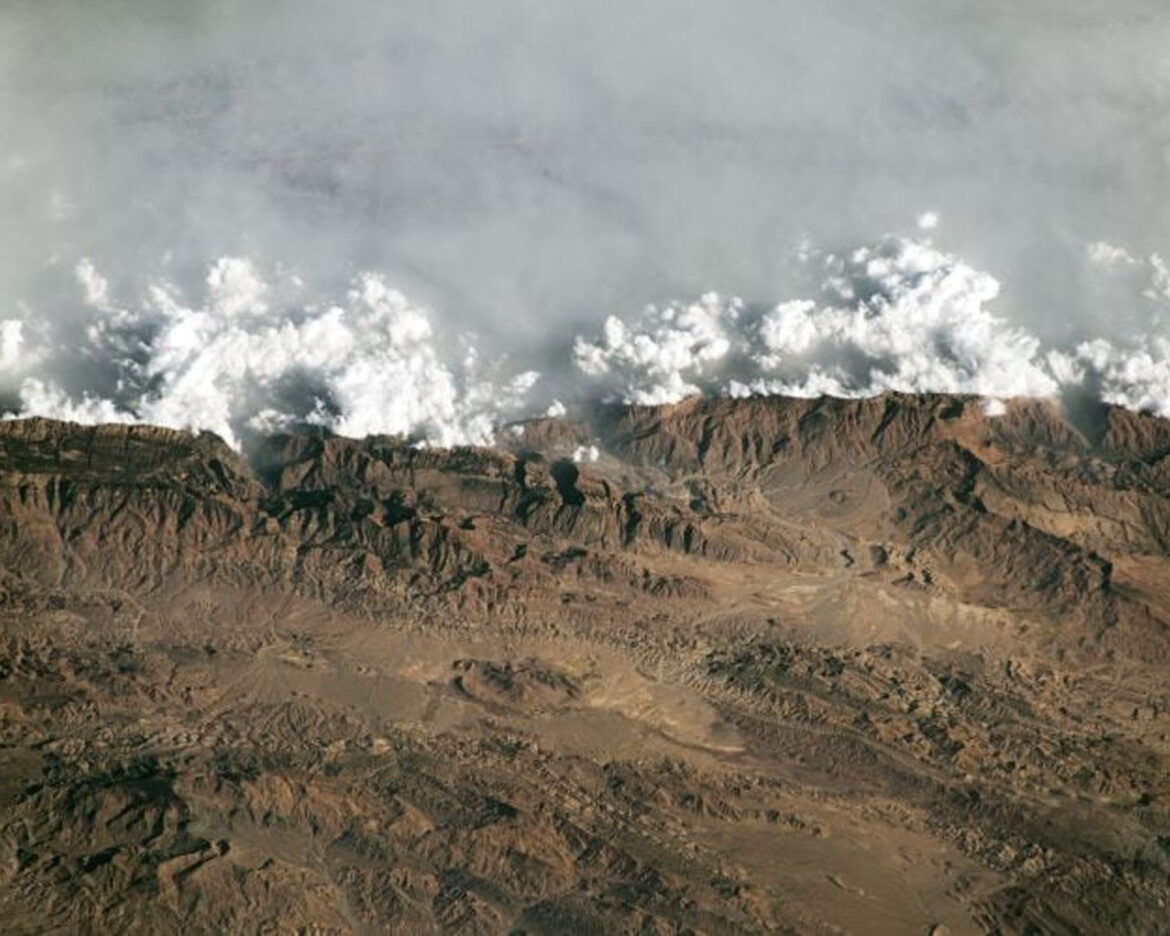Photograph captured by an astronaut aboard the International Space Station (ISS) showcases a remarkable interaction of haze and clouds with the high-elevation ridges of the Sulaiman Mountain Range. Although this striking image was taken in December 2023, it was only recently featured as the “Image of the Day” on NASA’s Earth Observatory website on April 28, 2024. Since then, the photograph has gained widespread attention across various platforms, including livescience.com.
The photograph reveals thick haze and clouds colliding with the elevated ridges near Dhana Sar, a region where a gorge dramatically cuts through the renowned Koh e Sulaiman, also known as the Sulaiman Mountains. This range, a geological marvel, serves as a natural barrier separating the western plateaus from the Indus River Valley to the east. Moisture and particulates carried by winds from the Indian Ocean and the Indus floodplain are funneled into this area, leading to a mesmerizing mix of haze, mist, and clouds on the windward side of the mountain range.
As these atmospheric elements struggle to traverse the lofty peaks, they are redirected around the mountains, creating a narrow stream of vapor that is vividly captured as it passes through gaps near Dhana Sar. The oblique angle of the photograph, combined with the shadows cast by the rugged terrain, emphasizes the dramatic topography of the Sulaiman Mountains.
NASA provided detailed information about the photograph, known as “ISS070-E-42565,” on its website. The image was captured on December 17, 2023, using a Nikon D5 digital camera with a 460-millimeter focal length. It was taken by a member of the Expedition 70 crew and later cropped and enhanced to improve contrast, with lens artifacts removed.
Rising to approximately 9,800 feet (3,000 meters) above sea level, the Sulaiman Mountains stand as a formidable natural divide. To the west, elevated plateaus stretch out, while the Indus River Valley lies to the east. The moisture-laden winds from the Indian Ocean often gather in this region, contributing to the formation of haze, mist, and clouds. However, as NASA’s Earth Observatory notes, these water vapors are unable to surmount the mountain peaks and are instead channeled around them through a process known as terrain-forced flow.
This photograph, offering a unique astronaut’s perspective, not only highlights the Sulaiman Mountains’ majestic beauty but also underscores the complex interplay of natural forces shaping the Earth’s landscapes.



